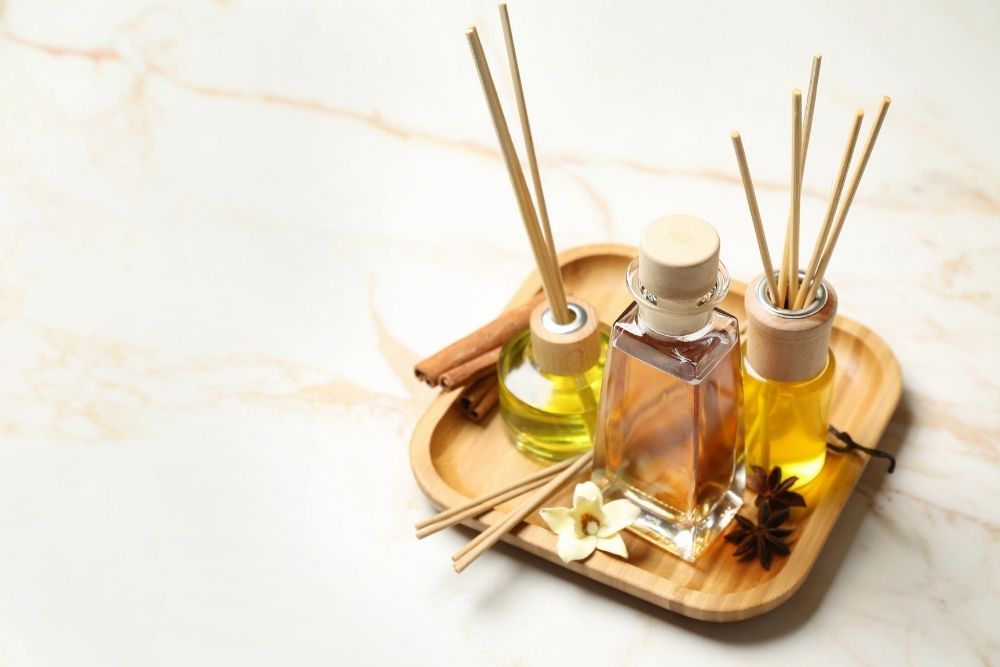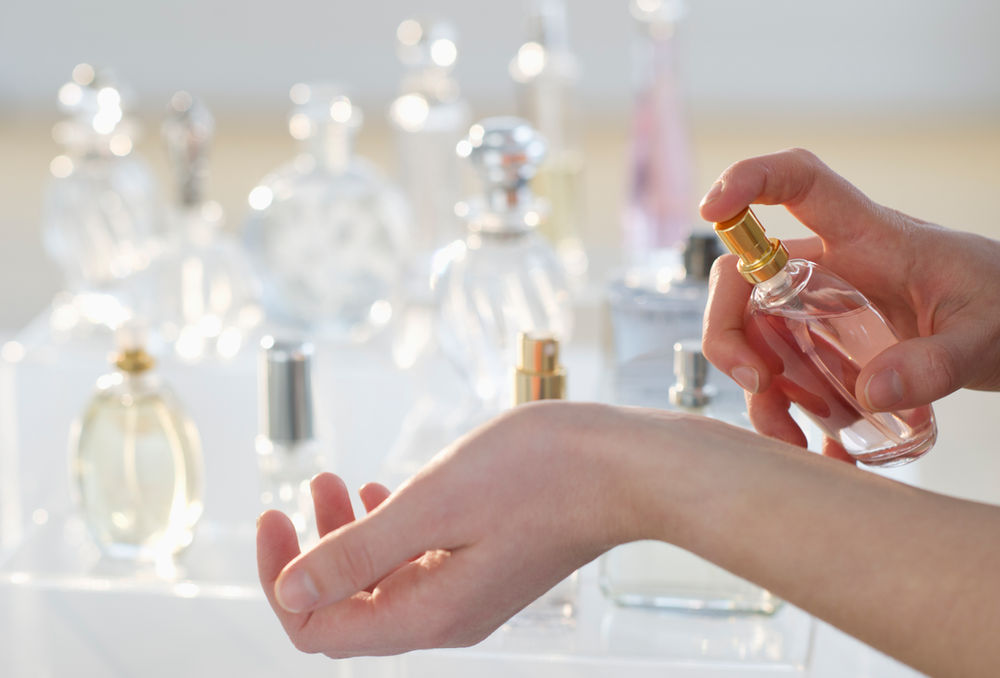Tips and Guides
How To Mix Essential Oils Into Perfume With Great Guide
You probably picture luxury, expensive perfume bottles from the store when you think about perfume. Also, despite their alluring scent and eye-catching look on the vanity, the substances they contain can be dangerous.
But did you know that natural essential oils can be used to create a lovely homemade perfume as well?
These oils have been used for thousands of years due to their medicinal properties and distinctive aroma.
We’ll show you how to mix essential oils into perfume to make a perfume that smells great, so you can use it as a scent in our perfume guide.
With just a few ingredients, we’ll work with you to create your favorite (new) scent using essential oils (that you may already have).
Composition Of Perfume Scent

When creating your own blend and learn about how to mix essential oils into perfume, you’ll need to become knowledgeable about the top note, body note, and base note of essential oil perfumes.
Top Notes
Produces 10% to 20% of the blend.
These essential oils have the quality being extremely volatile (they evaporate very quickly). This implies that the aroma will fill your senses immediately and then quickly fade away.
Its aroma will give the first impression of the perfume blend because of this property. The aromas of the oils used in this note will typically be uplifting, light, and airy.
Basil, Bergamot, Clary Sage, Coriander, Eucalyptus, Grapefruit, Lemon, Lemongrass, Lime, Wild Orange, Peppermint, Petitgrain, Spearmint, Tangerine, Melaleuca, and Wintergreen are typical oils found in the top note.
Middle Notes
produces 60 to 80% of the blend.
The perfume blend will have a full body thanks to these essential oils. These are less volatile than the Top Notes and will take some time to become apparent (typically 20-60 minutes after application).
These smells will typically be cozy and inviting.
Black pepper, Cardamom, Cilantro, Douglas Fir, Sweet Fennel, Geranium, Juniper Berry, Lavender, Marjoram, Melissa, Oregano, Roman Chamomile, Rosemary, Spikenard, Thyme, and Siberian Fir are typical oils in the middle note.
Base Notes
From 10% to 20% mix.
On how to mix essential oils into perfume, this group of essential oils will have a more earthy scent. They will be noticeable for a while (usually an hour or two after application) and they will also slow down the evaporation of the oil from the top two notes.
Usually, these will smell really luxurious and also very calming.
Arborvitae, Blue Tansy, Cassia, Cedarwood, Cinnamon Bark, Clove Bud, Copaiba, Frankincense, Ginger, Helichrysum, Jasmine, Myrrh, Patchouli, Rose, Sandalwood, Vetiver and Ylang Ylang are typical essential oils in the list of fragrance oils. last.
How To Mix Essential Oils Into Perfume

Prepare Ingredients And Use Perfume
How to mix essential oils into perfume? What supplies and ingredients do you need to practice how to mix essential oils into perfume? You will require the following items:
- Certified Pure Therapeutic Grade Essential Oils
- Wine
- Pure water
- Fractionated coconut oil (or another carrier oil like jojoba oil)
- Beeswax (thick perfume) (for thick perfume)
- perfume box or box
- spray bottle (to spray perfume)
- bottle-shaped roller (for rolling perfume)
- Jar (for solid perfumes) (for solid perfumes)
Make Your Mix
First and foremost about how to mix essential oils into perfume, remember that everything in this guide—and every other guide you’ll read—is just a suggestion or advice. It takes more art than science to create your own scent.
What may be the best combination for one individual may be the worst-smelling combination for another. Try different combinations and experiment to see which works best for your body chemistry.
We recommend keeping a journal of your blending experiments so you can make notes as you go through the process of how to mix essential oils into perfume, refer to them next time, and try something a little different. until you find your ideal signature scent.
You should not choose more than three to seven oils from the three-note families when blending by note.
- The ratios 1:1:1, 3:2:1 and 4:1 [top:body:base] are some suggestions.
- For example, you can choose 3 oils for the top, 2 oils for the base, and 1 oil for the base if you use the 3:2:1 formula.
Fill a bottle with a drop of your basic note, then sniff it. Note your ideas.
Rotate some middle notes in, then inhale. Has something changed? Put it in text.
Stroking, then inhaling after adding a drop of top notes. Has something changed?
Now, gradually add more top and middle drops. How has it changed?
Check to see if the smell changes after letting this set for a day or two.
- Put some onto a cotton ball and sniff to discover how the scent changes in the presence of air. It will not smell exactly like it does right out of the bottle.
- Ideally, enhance your skin and smell. Once combined with various skin types, your blends will smell differently.
Have fun playing around with this! Try to “recreate” a mixture that is akin to a perfume or odor from your past that makes you feel pleased.
Choose The Perfume You Wear

The next step of the how to mix essential oils into perfume guide is to decide what kind of scent you want to create. There are five different types to choose from. The amount of essential oil or fragrance contained in each will vary from one to another based on how strong the scent is.
The strongest scent, Eu de Parfum, is followed by the weakest, After Shave.
- Usually, there are 26 to 41 drops of oil in each Eau de parfum.
- There will be 17 to 26 drops of oil in each atom of the eau de toilette.
- There will be 13–17 drops of oil in Eu de Cologne.
- There will be 4 to 8 drops of oil in each serving of Body Splash.
- There will be 2.5 to 5 drops of oil in the After Shave.
You will use the following ingredients to create an eau de toilette blend using the essential oil notes chart above:
- Three to four drops of top notes
- 11 to 18 drops of middle/stem note
- Basic/fixed notes in 3–4 drops
- 8 to 10 mL alcohol
- Space left with distilled water
Labeling For Essential Oil Perfumes
It is usually helpful to be able to identify your smells once you produce them so you know what is within the bottle. You can print out and use the simple 2×2 labels that are provided below.
According to our research about how to mix essential oils into perfume, the ideal method for applying a DIY label is to cut a piece of clear packing tape slightly larger than your label. It will not only keep the label attached to the bottle but also offer a thin layer of protection to keep the label looking good for a little while longer.


